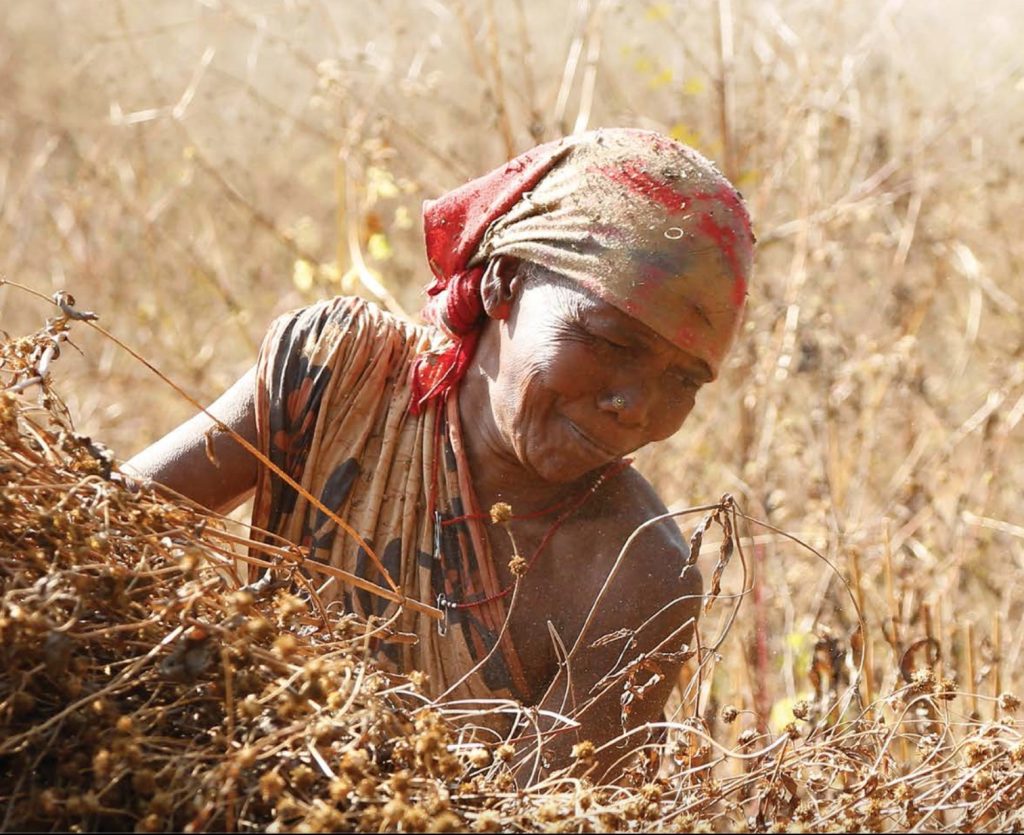Context
Food subsidy through Public Distribution System (PDS) has reduced the stress that Adivasi households would have faced due to lower income, according to a new report Status of Adivasi Livelihoods Report 2022 released by the non-profit PRADAN.
About
- PRADAN’s Status of Adivasi Livelihoods Report 2022 (SAL Report 2022) is a comprehensive study aimed at understanding the status of livelihoods of Scheduled Tribes from India’s central belt.
- The report is based on a household survey covering a sample of 6,019 households. Of these, 4,745 were Adivasi, 393 were PVTG, and the rest 881 were non-Adivasi households from the same region.
- The report also includes 50 focus group discussions of different sections of villagers and 28 interviews of persons closely associated with and knowledgeable about Adivasi issues.
- First report covers Jharkhand and Odisha in SAL Report 2021.
- The SAL reports aim to understand the status of livelihoods of Scheduled Tribes from India’s central belt.
Public Distribution System (PDS)
- It evolved as a system of management of scarcity through distribution of foodgrains at affordable prices.
- The PDS system was introduced in India in 1947.
- PDS is operated under the joint responsibility of the Central and the State/UT Governments.
- The Central Government, through Food Corporation of India (FCI), has assumed the responsibility for procurement, storage, transportation and bulk allocation of food grains to the State Governments.
- The operational responsibility including allocation within State, identification of eligible families, issue of Ration Cards and supervision of the functioning of Fair Price Shops (FPSs) etc., rest with the State Governments.
The report covers the following aspects:
- Cultural ethos of Adivasi which shapes their livelihoods practices,
- Resource conditions under which Adivasi practice their livelihoods,
- External interventions which affect living and livelihood conditions,
- Attributes of the households such as literacy, landholding, etc.
- Livelihood activities practiced,
- Income, food security and other livelihood outcomes.
Key Finding of Report
- Dignified Living Despite Lower Incomes: The Adivasis of Madhya Pradesh and Chhattisgarh are able to live with dignity despite their lower incomes, thanks to government interventions like the Public Distribution System (PDS
- PDS Impact on Income Stress: The PDS significantly reduces stress for Adivasi households in both states, addressing challenges posed by lower incomes.
- PDS Outlet Distribution: In Madhya Pradesh, PDS outlets are present in 51% Adivasi, 63% non-Adivasi, and 50% PVTG villages. In Chhattisgarh, these figures are 63%, 88%, and 36%, respectively.
- Affordability of Goods: Adivasi households spend only a fraction (13% in Chhattisgarh, 22% in Madhya Pradesh) of the market price to procure goods through PDS.
- Road Connectivity Statistics: In Madhya Pradesh, 78% Adivasi, 79% non-Adivasi, and 80% PVTG villages are connected to block headquarters by all-weather roads. In Chhattisgarh, the corresponding figures are 80%, 100%, and 82%.
- Public Transport Linkage: In Madhya Pradesh, 42% Adivasi, 63% non-Adivasi, and 80% PVTG villages are linked to block headquarters by Public Transport. In Chhattisgarh, 30%, 40%, and 9%, respectively.
- Income Disparities: In Madhya Pradesh: Adivasi – Rs 73,900, Chhattisgarh – Rs 53,610, both below the national average of Rs 122,610 per agricultural household (2018-19).
- Food Insecurity: In Madhya Pradesh (32% Adivasi, 27% non-Adivasi, 61% PVTG) and Chhattisgarh (27% Adivasi, 42% non-Adivasi, 29% PVTG).
- Landholding Patterns: In Madhya Pradesh: Adivasi – 3.9 acres, PVTG – 4.4 acres. In Chhattisgarh: Adivasi – 3.2 acres, PVTG – 3 acres.
- Regional Disparities: Bhil-dominated areas in Madhya Pradesh’s west show 1.5 times higher average household income and higher per capita income (Rs 24,571) compared to other regions.
- Dietary Diversity: Bhil region exhibits the highest dietary diversity with 81% for Adivasis and 93% for non-Adivasis.
- Child Malnutrition Rates: Malnutrition rates for female children below 5 years are highest among Adivasis (MP – 51%, Chhattisgarh – 44%), PVTG (MP – 72.5%, Chhattisgarh – 35.7%), and non-Adivasis (MP – 48.1%, Chhattisgarh – 32.6%).
- Livelihood Challenges: Factors influencing livelihoods include lack of basic reading and writing skills, limited land ownership, and declining income from forest produce.
- Gender Dynamics: Adivasi women exhibit more autonomy but bear the majority of household chores and livelihood activities. Gender discrimination persists in decision-making and customary practices.
Particularly Vulnerable Tribal Groups (PVTGs)
- In 1973, the Dhebar Commission created a separate category of tribal groups called Primitive Tribal Groups (PTGs) who were considered less developed among the tribal groups.
- In 2006, the Government of India renamed PTGs as Particularly Vulnerable Tribal Groups (PVTGs).
- PVTGs are mostly homogenous, with a small population, relatively physically isolated, social institutes cast in a simple mould, absence of written language, relatively simple technology, and a slower rate of change.
- PVTGs in Madhya Pradesh and Chhattisgarh- Abujh Macias, Baigas, Bharias, Hill Korbas, Kamars, Saharias and Birhor.
Way for ward
To ensure sustainable improvement, efforts should focus on:
- Boost incomes: Promote skill development, land rights, and sustainable forest-based livelihoods.
- Enhance food security: Address malnutrition, particularly among children, and empower women in nutrition decision-making.
- Bridge disparities: Focus on PVTGs and regions lagging behind, ensuring equitable access to resources and opportunities.
- Champion gender equality: Empower Adivasi women through education, livelihood opportunities, and dismantling discriminatory practices.

